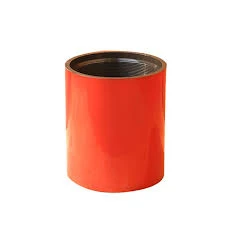- Afrikaans
- Albanian
- Amharic
- Arabic
- Armenian
- Azerbaijani
- Basque
- Belarusian
- Bengali
- Bosnian
- Bulgarian
- Catalan
- Cebuano
- Corsican
- Croatian
- Czech
- Danish
- Dutch
- English
- Esperanto
- Estonian
- Finnish
- French
- Frisian
- Galician
- Georgian
- German
- Greek
- Gujarati
- Haitian Creole
- hausa
- hawaiian
- Hebrew
- Hindi
- Miao
- Hungarian
- Icelandic
- igbo
- Indonesian
- irish
- Italian
- Japanese
- Javanese
- Kannada
- kazakh
- Khmer
- Rwandese
- Korean
- Kurdish
- Kyrgyz
- Lao
- Latin
- Latvian
- Lithuanian
- Luxembourgish
- Macedonian
- Malgashi
- Malay
- Malayalam
- Maltese
- Maori
- Marathi
- Mongolian
- Myanmar
- Nepali
- Norwegian
- Norwegian
- Occitan
- Pashto
- Persian
- Polish
- Portuguese
- Punjabi
- Romanian
- Russian
- Samoan
- Scottish Gaelic
- Serbian
- Sesotho
- Shona
- Sindhi
- Sinhala
- Slovak
- Slovenian
- Somali
- Spanish
- Sundanese
- Swahili
- Swedish
- Tagalog
- Tajik
- Tamil
- Tatar
- Telugu
- Thai
- Turkish
- Turkmen
- Ukrainian
- Urdu
- Uighur
- Uzbek
- Vietnamese
- Welsh
- Bantu
- Yiddish
- Yoruba
- Zulu
api 5ct coupling
Understanding API 5CT Coupling A Comprehensive Overview
API 5CT is a specification standard established by the American Petroleum Institute (API) that covers the casing and tubing materials used in the oil and gas industry. The standard outlines the technical requirements for different grades of steel pipe used in well construction and is crucial for ensuring safety and efficiency in drilling operations. One of the critical components within the API 5CT specification is the coupling, which plays a vital role in the connection of pipe segments.
What is API 5CT Coupling?
API 5CT couplings are mechanical devices designed to connect two lengths of casing or tubing and provide a sealed joint. They are typically threaded on both ends and are used to ensure a robust connection between the pipe segments, facilitating the transmission of fluids and gases from the reservoir to the surface. The design and material of these couplings are essential to withstand the extreme conditions present in oil and gas wells, such as high pressure, temperature variations, and corrosive environments.
Types of API 5CT Couplings
API 5CT specifies various grades and types of couplings, each suited for different operational requirements. The most commonly used couplings are
1. Threaded Couplings Typically used to connect relatively short sections of casing or tubing, these couplings have external threads that match with the internal threads of the pipes. They allow for quick assembly and disassembly, which is essential during drilling operations.
2. Welded Couplings These involve welding the pipes directly to the couplings, creating a stronger joint that can handle higher stress and pressure. Welded couplings are often used in high-pressure applications where a robust connection is paramount.
3. Flanged Couplings Features flanged ends that can be bolted together. These are often used in situations where ease of maintenance is required or for connecting to surface equipment.
Importance of Quality Standards
api 5ct coupling

Couplings that conform to the API 5CT standard are subjected to rigorous testing and quality assurance processes. API outlines specific requirements for chemical composition, mechanical properties, and manufacturing practices, ensuring that the couplings will perform reliably under adverse conditions. Compliance with API standards is essential not only for regulatory compliance but also for the safety and efficiency of drilling operations.
Factors to Consider When Selecting API 5CT Couplings
When choosing API 5CT couplings, several factors must be taken into account
- Material Grade The material grade of the coupling should match the intended use and the environmental conditions of the well. For instance, higher grades are recommended for wells with aggressive corrosion or high temperatures.
- Thread Type and Size Different types of threads (according to API standards) can affect the strength and integrity of the connection. It’s crucial to select the right size and thread pattern for optimal performance.
- Environmental Conditions Consideration of factors such as temperature fluctuations and exposure to corrosive substances is vital in determining the most suitable coupling type.
- Pressure Ratings The couplings must be rated for the maximum pressure they will encounter during operation to prevent failures.
Conclusion
In summary, API 5CT couplings are an indispensable component of the oil and gas industry, facilitating safe and effective connections between segments of casing and tubing. With various types available, selecting the right coupling based on material grade, environmental conditions, and operational requirements is crucial for the success of drilling operations. Adhering to API standards not only ensures regulatory compliance but also enhances the overall safety and performance of oil and gas projects, ultimately leading to more efficient resource extraction. Understanding these components in detail creates a foundation for improved practices and innovations in well construction and management.
-
Well Casing Extension Couplings – Applications and InstallationNewsJun.06,2025
-
Types of Crossover Subs in Drilling & CompletionNewsJun.06,2025
-
Key Features of High-Quality Tubing Pup JointsNewsJun.06,2025
-
Installation and Maintenance Tips for Steel Couplings for PipeNewsJun.06,2025
-
How to Select the Right Pup Joint for Oil & Gas OperationsNewsJun.06,2025
-
Applications of Stainless Steel Pipe CouplingsNewsJun.06,2025







